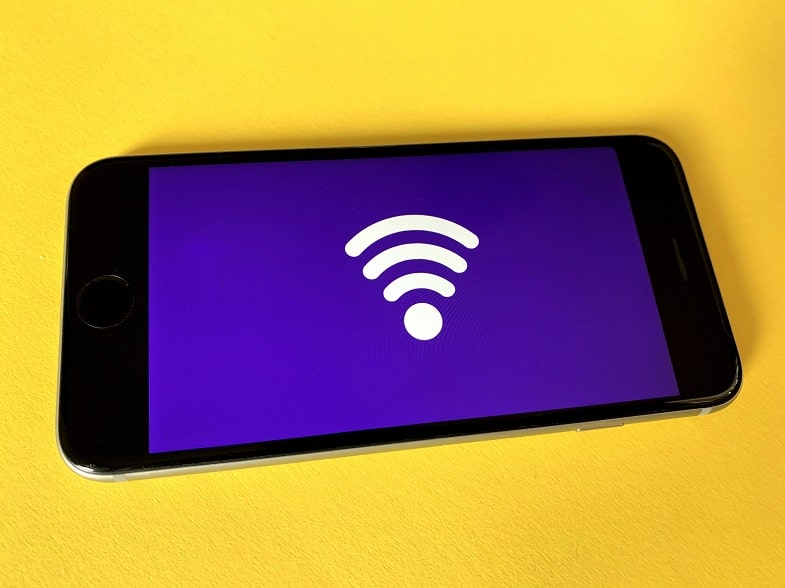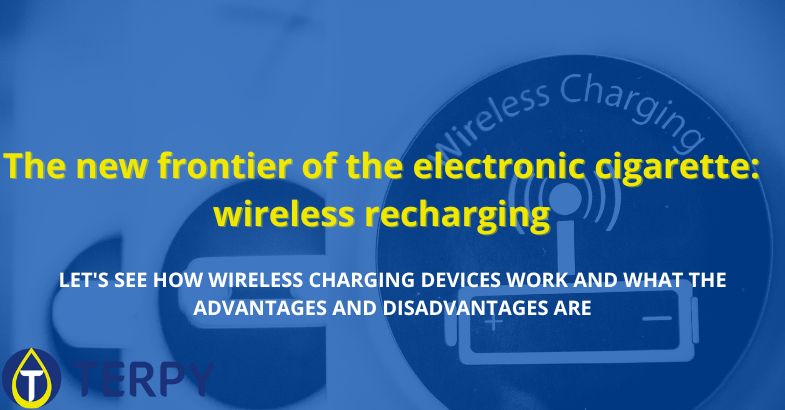Published on: 25/08/2023
LET’S SEE HOW WIRELESS CHARGING DEVICES WORK AND WHAT THE ADVANTAGES AND DISADVANTAGES ARE
The electronic cigarette is an electronic device that many smokers use to stop smoking and avoid introducing all the harmful substances of the traditional cigarette into their body.
Like all portable devices, e.g. smartphones and tablets, e-cigs have a battery that has to be recharged when empty or low on charge. In recent times, vapers can find wireless charging devices, charging stands or pods on the market that eliminate wires to allow charging simply by resting on the base.
How wireless charging works
Wireless charging works by means of the physical principle of electromagnetic induction: the wireless charger generates an electromagnetic field that transfers energy between the charger and, in the case we are interested in, the electronic cigarette.
Let us go into more detail.
The base, which is connected to the electric current via a cable, has a transmission coil (or spiral circuit) inside, which generates an electromagnetic field.
The electronic cigarette, through a receiving coil, picks up the electromagnetic field generated by the charger and converts it into electrical energy to be used to charge the battery.


There are two types of wireless charging devices:
induction electric recharging, which requires contact between the recharging base and, in the case we are interested in, the electronic cigarette;
resonance electric recharging, which generates an electromagnetic field around the base and does not require contact with the device to be recharged, but only proximity.
Read also: How to improve your electronic cigarette experience: the accessories you must have
The standards for wireless charging devices are Qi and PMA
The Qi standard (from ‘ch’, life energy in Chinese) is the most widely used by manufacturers and regulates both construction quality and safety standards to protect users from the risk of malfunctioning. Qi-certified products are compatible with each other and integrate seamlessly with each other for perfect operation.
This standard is due to the Wireless Power Consortium (WPC), created by the world’s biggest electronics brands, including Samsung, Apple, Huawei, Xiaomi, Google, LG and Sony.
Recently, the QI2 standard has been launched, also thanks to Apple’s contribution: the aim is to make it a global standard due to improved compatibility, greater energy efficiency and shorter charging times.
Created by the Power Matters Alliance, the PMA standard differs little from the Qi standard: the operating principle is the same, the difference lies in the charging frequency and different connection protocols.
A few years ago, the Power Matters Alliance (PMA) and the Alliance for Wireless Power (A4WP) together created a new company, the AriFuel Alliance.
As is clear, in order to work with wireless charging devices, the electronic cigarette must be compatible with one of the two standards.
Advantages and disadvantages of wireless charging
Why choose a wireless charging device for your electronic cigarette?
Let us see what the advantages and disadvantages are, the pros and cons compared to a wired charger.
The advantages are primarily related to convenience.


The almost total absence of cables and wires, apart from the cable connecting the base to the electrical socket, reduces clutter and also the risks of cable malfunction or poor maintenance. Think of a badly connected or kinked cable: not only does it run the risk of being quickly ruined, it also poses a danger to the device and people.
The lifespan of wireless chargers is also longer than that of corded chargers, which allows for some savings. In addition, wireless devices tend not to overheat, which is an added security compared to traditional chargers.
Disadvantages include the time, which is on average longer than with corded charging (although fast-charging devices do exist), and the inability to use the e-cigarette while it is connected to the charging stand.
In general, wireless charging has a lot of pros in its favor, but it does not hide some minor disadvantages related mainly to charging times.
Read also: How to refill disposable e-cigs and why you should avoid doing it
In conclusion
Wireless recharging is a new frontier for the electronic cigarette: being able to recharge with a convenient and practical system, without too many wires in the way, is certainly a not insignificant innovation, which also avoids the wear and tear caused by constantly plugging in and out the USB cable. On the other hand, wireless extends the time and does not allow the e-cig to be used while charging.
The ideal is to have an e-cig that is compatible with both wireless and wired charging and to choose according to the needs of the moment: it is good to equip yourself with all the accessories to always improve your vaping experience.
Remember, however, that the electronic cigarette must be compatible with one of the two standards (Qi and PMA) in order to be recharged wirelessly.
So if you are looking for quality products, visit Terpy, the leading e-commerce in the sector.










